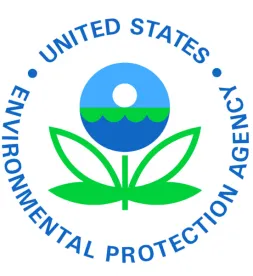Although legal hurdles remain, EPA’s Clean Power Plan envisions sweeping changes to the electricity generation sector designed to mitigate climate change concerns through reduction of carbon dioxide emissions by 2030, and it tasks states with determining how to adjust their energy mix and resources to meet state-specific emissions targets.
On August 3, US President Obama and the US Environmental Protection Agency (EPA) released the final Clean Power Plan (CPP or final rule), an ambitious regulation establishing state-specific standards for reduced carbon emissions from fossil fuel-fired power plants. Promulgated under the EPA’s authority under Section 111(d) of the Clean Air Act, 42 U.S.C. § 7411(d), the regulation is the first-ever federal limitation on carbon emissions and marks the culmination of the Obama administration’s efforts to reduce emissions from power plants and to encourage renewable energy development, with the stated goal of lessening the impact of climate change.
The final rule is an updated version of a proposal released in June 2014 that called for a reduction in power plant carbon dioxide emissions of 30% below 2005 levels. The final rule targets a 32% cut in power plant carbon dioxide emissions (using 2005 as the baseline) by 2030. The final rule promises to have a significant impact on the electric power sector.
The primary issues that the CPP addresses are summarized below.
CPP Features
The final rule establishes interim (between the years 2022 and 2029) and final (by 2030) carbon dioxide (CO2) emission reduction goals for 48 states and the District of Columbia for two subcategories of fossil fuel-fired generators—fossil fuel-fired electric utility steam generating units (generally, coal- and oil-fired power plants) and natural gas-fired combined cycle generating units. The final rule offers states a range of options to comply with the standards. Specifically, states can choose to comply with a rate-based goal measured in pounds per megawatt hour (lb/MWh) or mass-based goals measured in total short tons of CO2. Additionally, the final rule promulgates guidelines for the development of state plans to achieve the emission standards.
The final CPP gives states two extra years to develop their implementation plans. By September 2016, states must submit either a final plan or an initial plan with a request for an extension. States requesting an extension will have until September 2018 to submit final plans, either alone or in cooperation with other states.
Under the CPP framework, state plans may incorporate (1) subcategory-specific CO2 emission performance rates; (2) state rate-based CO2 emission reduction goals; and (3) state mass-based CO2 goals that represent the equivalent of each state’s rate-based goal, which the EPA says provides flexibility and will facilitate states’ choices in developing their plans. Notably, the final rule states that the inclusion of mass-based goals paves the way for states to implement intra- and interstate mass-based trading programs that states, utilities, and power generating companies can use to meet emissions goals.
The EPA calculated its state emissions reduction targets through the application of a Best System of Emissions Reduction (BSER), which consists of the following three measures (referred to as “Building Blocks”) that represent approaches to reducing CO2 emissions rates from existing generators:
(1) Improving heat rate at affected coal-fired steam generators
(2) Substituting increased generation from lower-emitting existing natural gas combined cycle (NGCC) units for reduced generation from higher-emitting affected coal- and oil-fired generating units
(3) Substituting increased generation from new zero-emitting renewable energy generating capacity for reduced generation from affected fossil fuel-fired generating units
The final rule also addresses, among other things, the following issues:
-
Clean Energy Incentive Program: The CPP establishes the Clean Energy Incentive Program (CEIP), an optional program intended to prioritize early investment in energy efficiency projects and drive faster renewable energy deployment. Under the CEIP, states will have the opportunity to award emission rate credits (ERC) to providers that make early investments in renewables, as well as in demand-side energy efficiency programs implemented in low-income communities.
-
Reliability: The final rule requires states to demonstrate that the development of their final plans considered reliability concerns. Additionally, the rule provides a “safety valve” for generators when there is a conflict between state plan requirements and electric grid reliability. The safety valve includes an initial period of up to 90 days in which the emissions of a reliability-critical generator that must exceed its obligations under the approved state plan due to a reliability need will not be counted against the state’s overall goal or emission performance rate or count as an exceedance that would otherwise trigger corrective measures.
-
Community Engagement: The EPA emphasized that the final rule would be particularly beneficial to “vulnerable” communities (which, for the purposes of this rulemaking, the EPA considers to be low-income communities and communities of color) that are disproportionately impacted by climate change and air pollution. Accordingly, the EPA urged states to evaluate the effects of their emissions reduction plans on such vulnerable communities. In this regard, the EPA stressed the importance of engagement between states and affected communities during the development of state plans.
Implementation
State plans are due in September 2016, but as mentioned above, states that need additional time to finalize their plans can request extensions of up to two years following the submittal of an initial plan. The final rule also pushes the initial compliance deadline to 2022 instead of 2020, as in the proposed rule. States are required to report to the EPA with all of the programmatic milestone steps the state will take between the time of the state plan submittal and the year 2022 to ensure that the plan is in effect as of 2022. States must submit a report to the EPA in 2021 that demonstrates that the state has thus far met the milestones to which it committed after submitting its final plan.
Potential Impacts and Next Steps
The CPP and related actions by the EPA will likely have wide-ranging impacts for various participants in the energy industry. For example, concurrent with the final rule, the EPA also issued Carbon Pollution Standards for new, modified, and reconstructed power plants that establish performance standards to limit greenhouse gas emissions from certain fossil fuel-fired electric utility steam generating units and natural gas-fired stationary combustion turbines. With regard to nuclear generation, the EPA determined in the CPP that generation from nuclear units under construction would not count towards state targets. However, the final rule provides that new nuclear construction and capacity uprates at existing nuclear units will be eligible for use in adjusting states’ CO2 emission rates, similar to the treatment the CPP affords existing renewables. The Nuclear Energy Institute (NEI) had previously commented that such new nuclear capacity should also include nuclear plants relicensed to operate beyond 60 years and any nuclear plants that had not received license extensions to operate beyond their original 40-year license term as of the beginning of the 2012 baseline year. The NEI also cautioned that nuclear plant operation beyond 40 years “cannot be treated as a foregone conclusion,” stressing that license renewal is a “major investment decision.”
The CPP will also likely have significant impacts on the fuel mix for states’ existing generation portfolios and for future oil and natural gas production. Building Block 2 (described above) is based on the increased use of NGCC plants, reflecting redispatching of generation away from higher-emitting fossil-fueled generators, such as coal- and oil-fired steam generators. However, the EPA also estimates that the final rule will not spur incremental natural gas production. Additionally, it is unclear at this time how the provisions in the final rule may interact with existing generators’ obligations. For example, it is unclear if generators may be forced to reduce operating capacity under state plans while still being contractually committed to serve as a capacity resource in an organized market.
To the extent that generators will have their outputs reduced under the implementation of state plans, the final rule does not provide for the Federal Energy Regulatory Commission (FERC), or any other agency, to provide generator owners with the ability to recover losses from forced operational reductions through rates in the form of “make-whole” compensatory relief. However, the final rule does include a reliability safety valve and other measures needed to maintain electric system reliability. States must show they have considered reliability in developing their state implementation plans, such as consultation with appropriate state reliability or planning agencies, and states can amend their approved plans to address unforeseen reliability challenges.
While it is unclear at this time whether there will be further review of the CPP, forthcoming legal challenges are likely, and the precise implementation of the final rule will depend on the decision-making of relevant state authorities.
FERC, the EPA, and the Department of Energy have entered into an agreement to jointly monitor the implementation of the CPP while state plans are developed, but the agreement does not require more than monitoring and communication among the parties and the states, imposing on FERC general bulk power reliability monitoring duties (with which FERC is already charged under its regulations implementing the 2005 amendments to the Federal Power Act).
Going forward, we urge industry participants and affected parties to closely monitor these issues as they develop.
The final rule is available here.




 />i
/>i

